Hace tiempo junto a un grupo de compañeros de trabajo, conocí un poco el estado Zulia (Venezuela) en un paseo cultural que nos llevó a varios lugares. Es la única vez que he estado allí y me gustó a pesar del intenso calor que caracteriza a esta región, así que en esta publicación comparto fotos de ese viaje a la llamada “Tierra del Sol Amado”.
We arrived in Maracaibo, capital of Zulia, very early in the morning and crossed the famous General Rafael Urdaneta Bridge, popularly known as "Bridge over the Lake". Inaugurated in 1962 to connect the city with the rest of the country, it is the second largest in Latin America with 8.6 km in length.
Llegamos a Maracaibo, capital del Zulia, muy temprano en la mañana y atravesamos el famoso Puente General Rafael Urdaneta, conocido popularmente como "Puente sobre el Lago". Inaugurado en 1962 para conectar la ciudad con el resto del país, es el segundo más grande de Latinoamérica con 8.6 Km de longitud.
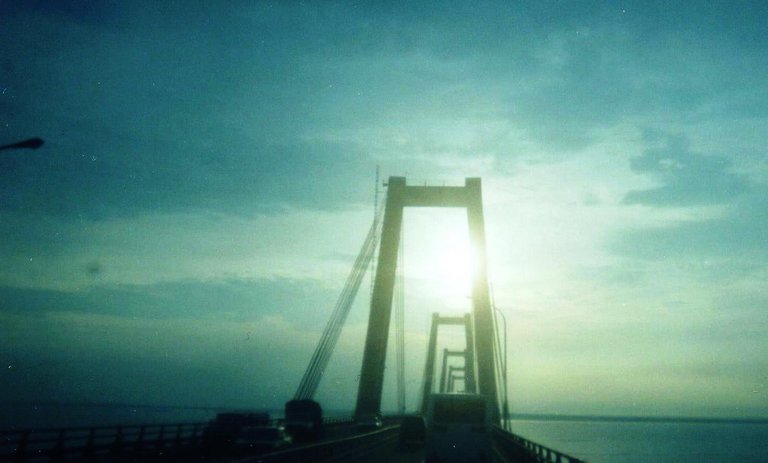
The cultural tour first took us to La Guajira, very close to the border with Colombia, to learn about the traditions and culture of the Wayúu indigenous community that lives there. Along that road we passed through some lonely salt flats.
El tour cultural nos llevó primero hasta la Guajira, muy cerca de la frontera con Colombia, para conocer de cerca las tradiciones y cultura de la comunidad indígena wayúu que allí habita. Por esa vía pasamos por unas solitarias salinas.
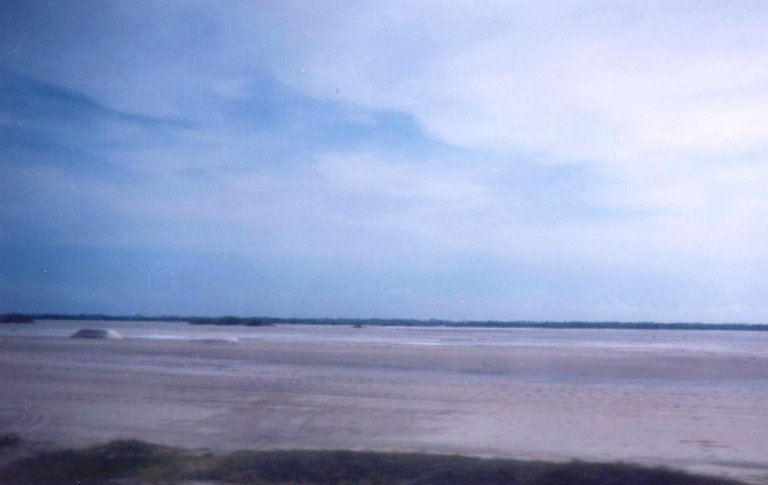
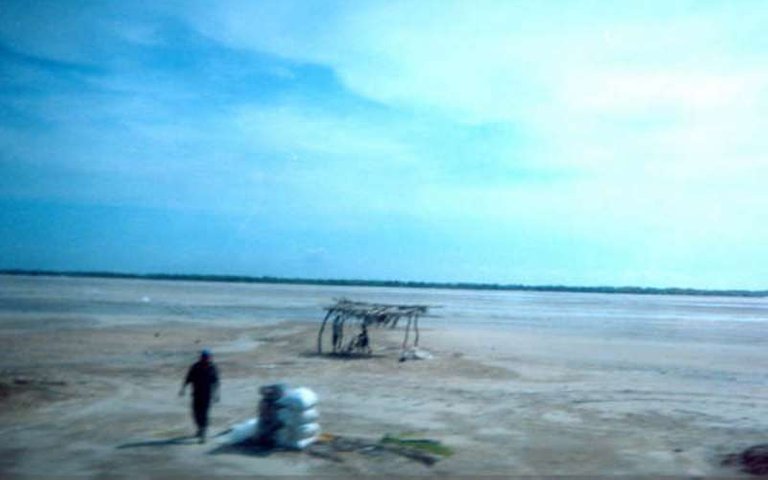
Upon arriving in the community, they took us to Alitasía Adventures, a cultural project where we saw representations of the various Wayúu customs, there we were received by the chief.
Al llegar a la comunidad, nos llevaron para Aventuras Alitasía, un proyecto cultural donde vimos representaciones de las diversas costumbres de los wayúu, allí fuimos recibidos por el cacique.
The Wayúu or Guajiros ethnic group is distributed between the Venezuelan and Colombian Guajira peninsula, they are the indigenous community with the most population in both countries.
La etnia wayúu o guajiros está distribuida entre la península de la Guajira venezolana y colombiana, son la comunidad indígena con más población en ambos países.
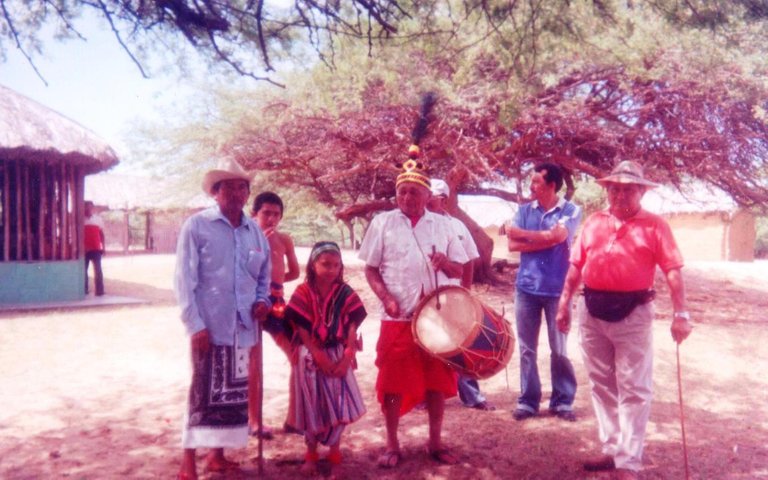
Then we entered a typical Wayúu house made of clay, to learn about their way of life, there we saw how they made a traditional makeup on a girl. Also there a pioche or healer offered us a drink of chirrinchi, which serves to heal and leave people as new, I thought this liquor was quite strong hahaha.
Luego entramos a una vivienda típica wayúu hecha de barro, para conocer sobre su forma de vida, allí vimos cómo le hacían un maquillaje tradicional a una niña. También allí una pioche o curandera nos ofreció un trago de chirrinchi, el cual sirve para sanar y dejar a la gente como nueva, me pareció bastante fuerte este licor jajaja.
In the house there were hand-woven bags by the Wayúu women, very beautiful and there they explained to us how certain customs take place, such as the passage of girls to women, something they call "the bleaching of the Majayura (adolescent)", and it is that when her first menstruation arrives, the girl is isolated in a hut where for a few days only the person who brings her food and plants to purify her enters, she also sleeps in a high hammock so that evil spirits don't reach her and they also cut her hair and dispose of all her belongings to give her everything new for her stage as a woman. In the end they make a party for her with special clothes and makeup for the occasion, it's like a presentation to society.
En la vivienda había bolsos tejidos a mano por las mujeres wayúu, muy bonitos y allí nos explicaron cómo acontecen ciertas costumbres como por el ejemplo el paso de las niñas a mujeres, algo que ellos llaman “el blanqueo de la Majayura (adolescente)”, y es que cuando le llega su primera menstruación, la niña es aislada en una choza donde por algunos días sólo entra la persona que le lleva la comida y plantas para purificarla, asimismo duerme en un chinchorro alto para que no la alcancen los espíritus malos y también le cortan el cabello y desechan todas sus pertenencias para darle luego todo nuevo para su etapa como mujer. Al final le hacen una fiesta con ropa y maquillaje especial para la ocasión, es como una presentación a la sociedad.
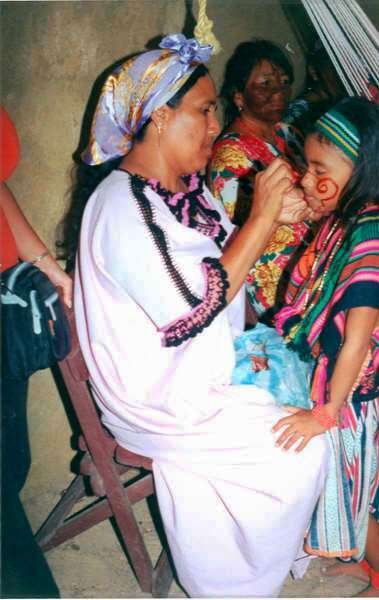
In the celebrations the Yonna Dance is usually presented, which to the rhythm of the drum seeks the balance between human beings and Mother Earth. In this demonstration of encounter and solidarity, movements of various animals such as the hen, the stone-curlew, the ant or the partridge are simulated in different steps.
En las celebraciones se suele presentar el Baile de la Yonna, que a ritmo de tambor busca el equilibrio entre los seres humanos y la madre tierra. En esta manifestación de encuentro y solidaridad se simulan en diferentes pasos movimientos de varios animales como la gallina, el alcaraván, la hormiga o la perdiz.
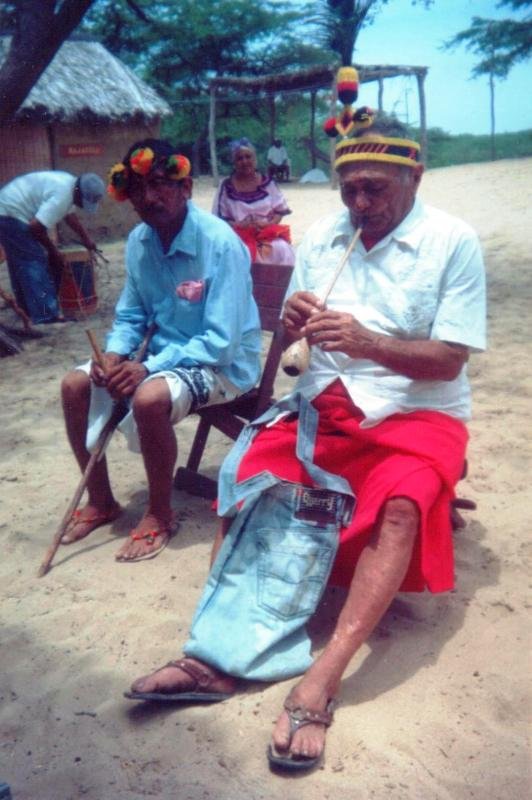
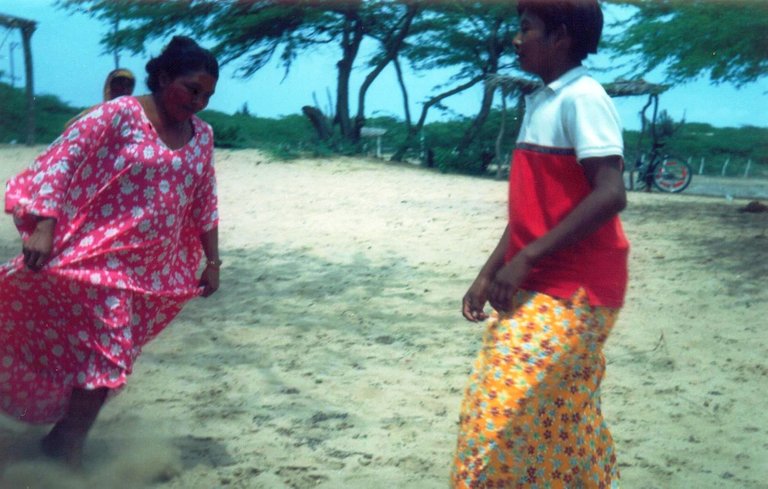
With her ample clothing deployed, the woman chases the man in this dance as her goal is to knock him down. He walks away taking steps backwards avoiding falling, but if this happens the couple is replaced by another. It was quite fun to watch this.
Con su amplia vestimenta desplegada, la mujer persigue al hombre en este baile ya que su objetivo es tumbarlo. Él se aleja dando pasos hacia atrás evitando caerse, pero si esto sucede la pareja es reemplazada por otra. Fue bastante divertido observar esto.
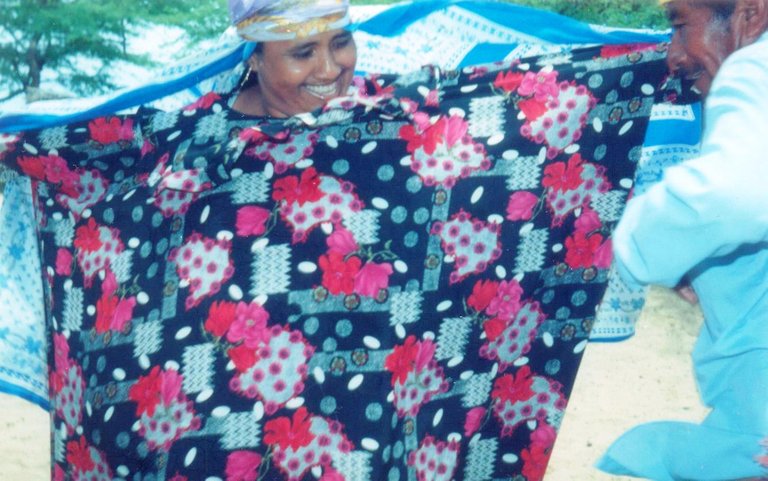
From there we went to have lunch at a place on the banks of the El Limón river and then to the jetty where we got on a boat for the next ride that took us to the Sinamaica Lagoon, located in the north of the Zulia state.
De allí nos fuimos a almorzar a un lugar a orillas del río El Limón y luego nos dirigimos al embarcadero donde nos montamos en una lancha para el siguiente paseo que nos llevó a la Laguna de Sinamaica, ubicada al norte del estado Zulia.
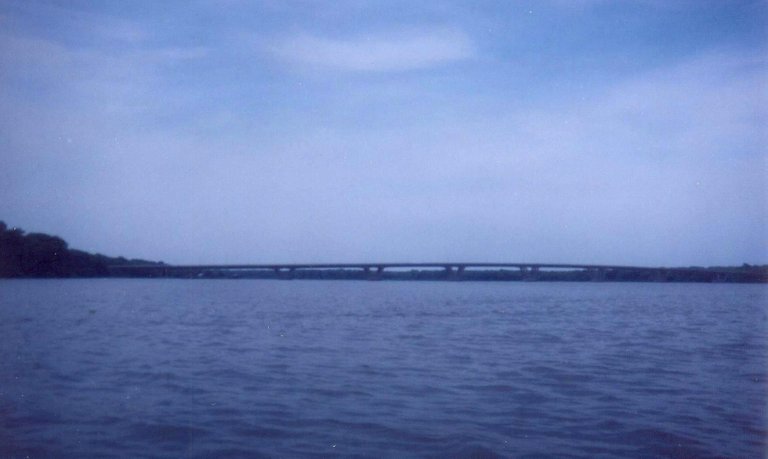

The Sinamaica Lagoon is one of the main tourist attractions in this region, not only because of all the nature it houses but also because the Añú ethnic group lives here, who still maintain their language, their typical houses, palafitos (on the water) and they live from fishing, hunting, crafts and agriculture.
La Laguna de Sinamaica es uno de los principales atractivos turísticos de esta región, no sólo por toda la naturaleza que alberga sino también porque acá vive la etnia Añú, quienes aún mantienen su idioma, sus viviendas típicas, los palafitos (sobre el agua) y viven de la pesca, la caza, la artesanía y la agricultura.
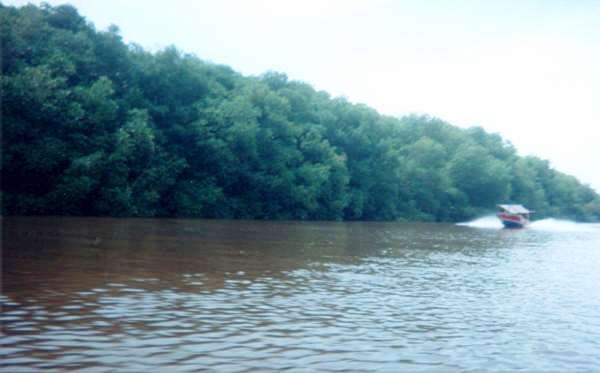
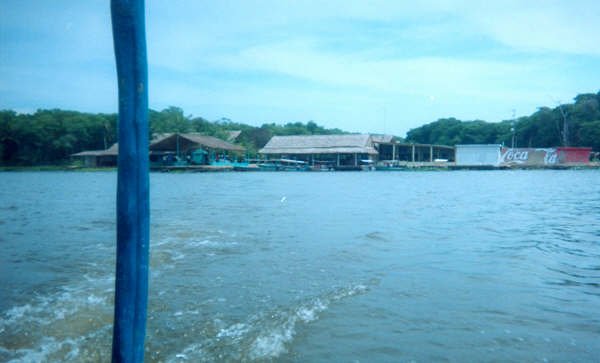
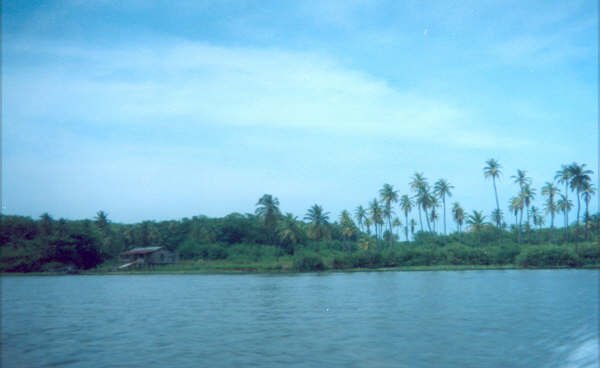
The Añú Indians use the curiaras as a means of transportation, boats made from tree trunks.
Los indígenas añú utilizan las curiaras como medio de transporte, unas embarcaciones hechas con troncos de árboles.

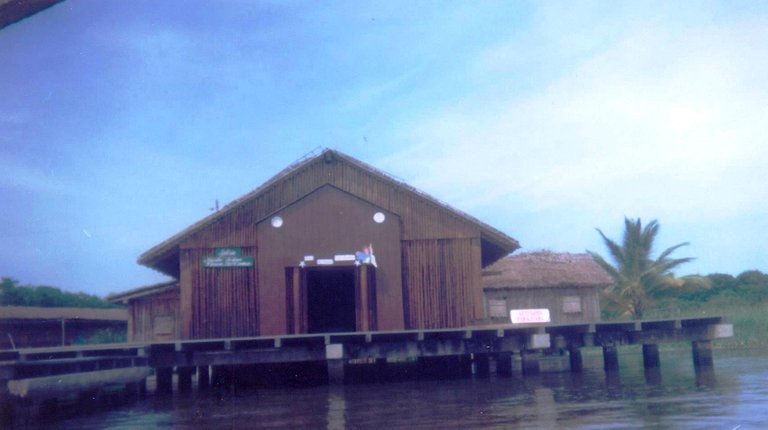
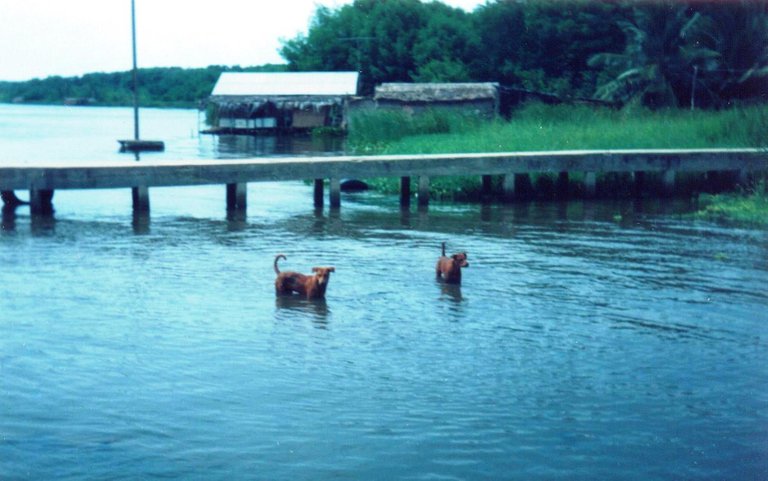
One of the most beautiful parts of the route is when we enter the mangrove area, there is a section where a tunnel is formed, a pity that the camera I had at that time didn't have very good resolution and the photos don't look very sharp.
Una de las partes más bonitas del recorrido es cuando entramos a la zona de manglares, hay un tramo donde se forma un túnel, lástima que la cámara que tenía en ese momento no tenía muy buena resolución y las fotos no se ven muy nítidas.
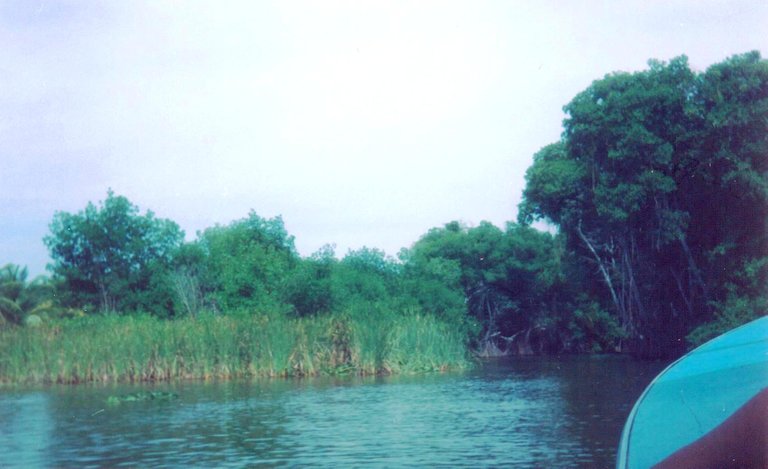
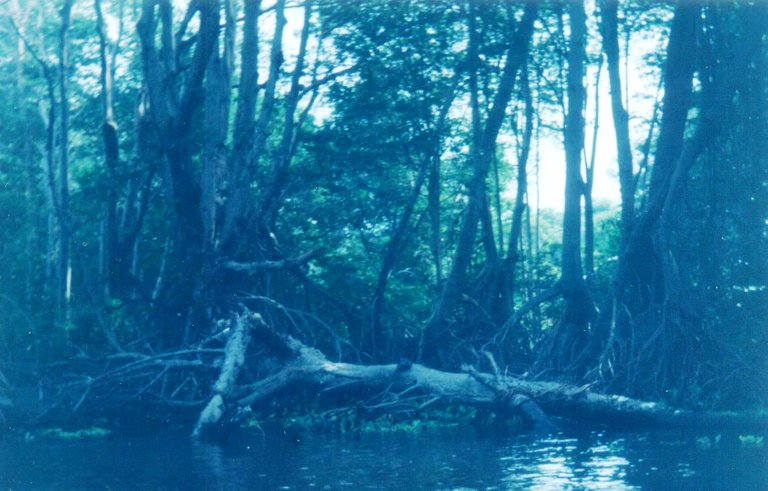
Later we returned to the city of Maracaibo to visit its most emblematic places, the heat there is very strong, I have never felt such hot, so steamy air.
Ya después volvimos a la ciudad de Maracaibo para recorrer sus sitios más emblemáticos, el calor allí es muy fuerte, nunca había sentido un aire tan caliente, tan vaporoso.
Our first stop was at the Zulia Museum of Contemporary Art (Maczul), a modern building with beautiful gardens that has a large collection of works by local artists, as well as being a space for research and training.
Nuestra primera parada fue en el Museo de Arte Contemporáneo del Zulia (Maczul), una moderna edificación con hermosos jardines que tiene una gran colección de obras de artistas locales, además de ser un espacio para la investigación y la formación.
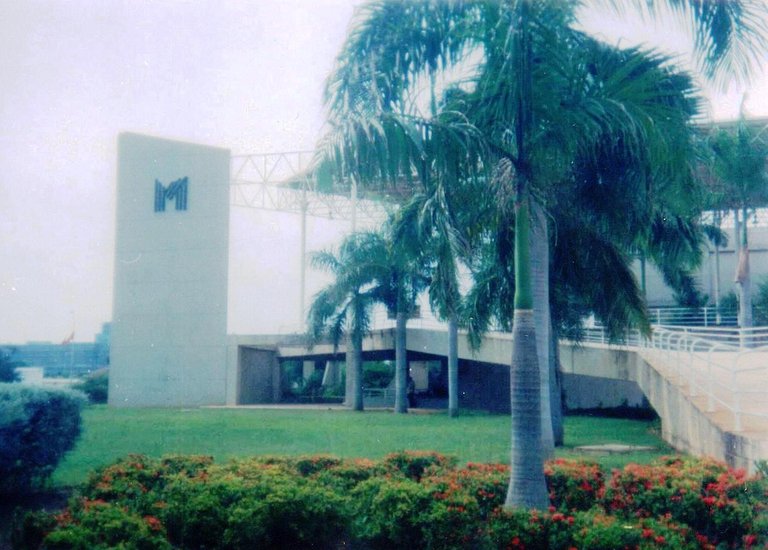
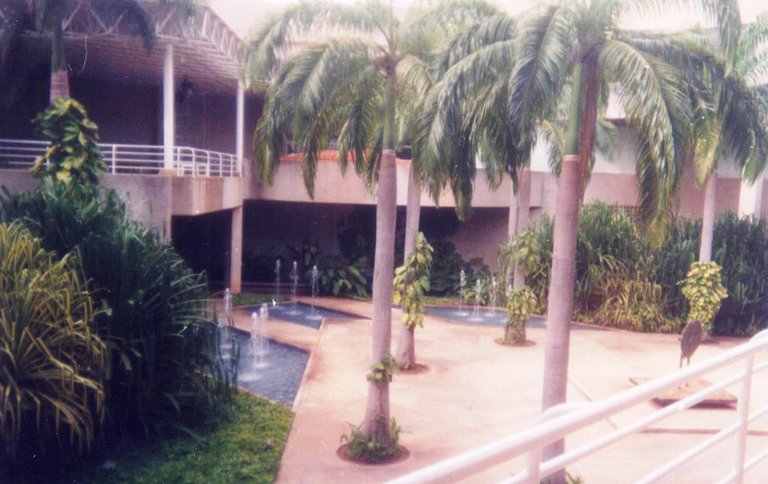
We also visited the Maracaibo Lía Bermúdez Art Center, a place where various activities are held: theater, exhibitions, etc.
También conocimos el Centro de Arte de Maracaibo Lía Bermúdez, un lugar donde se hacen variadas actividades: teatro, exposiciones, etc.
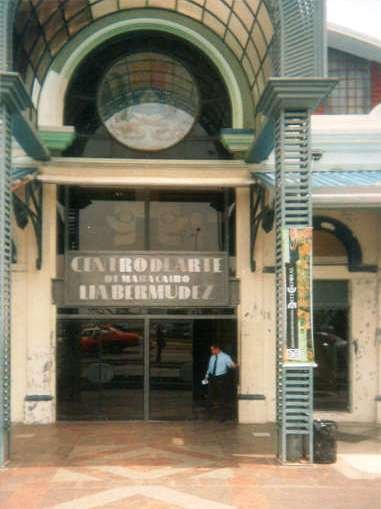
We then went to older sites such as Palacio de los Cóndores (Palace of the Condors), located in the heart of the city of Maracaibo, by Bolívar Square. Currently this building is the seat of the executive power of the state of Zulia.
Fuimos luego a sitios más antiguos como el Palacio de los Cóndores, ubicado en pleno centro de la ciudad de Maracaibo, por la Plaza Bolívar. Actualmente esta edificación es la sede del poder ejecutivo del estado Zulia.
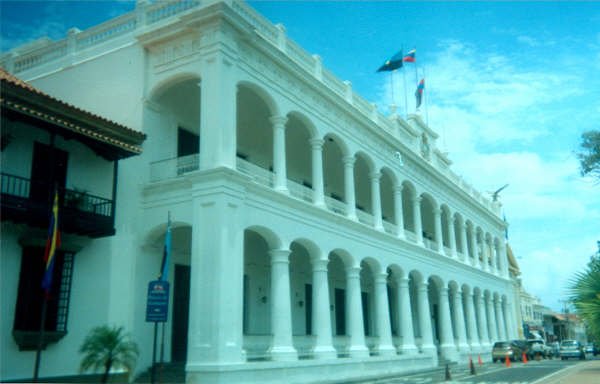
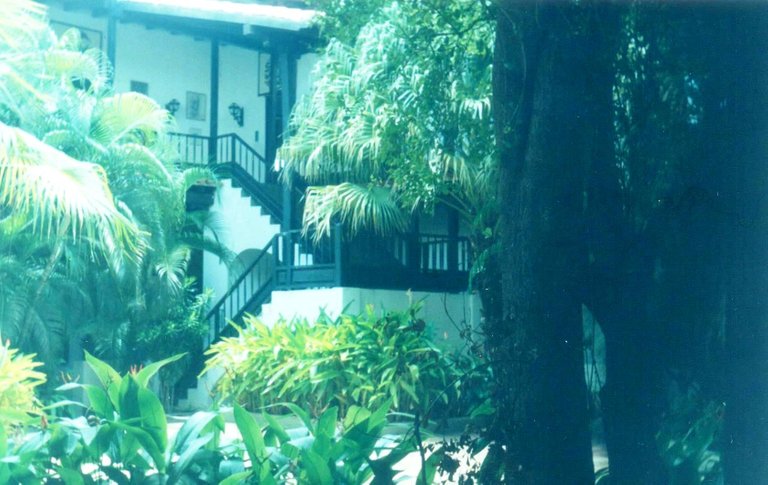
Another of the icons of this city is the Baralt Theater, inaugurated in 1932, it was the first place in Venezuela that screened films made in the country.
Otro de los iconos de esta ciudad es el Teatro Baralt, inaugurado en 1932 fue el primer lugar de Venezuela que proyectó las películas hechas en el país.
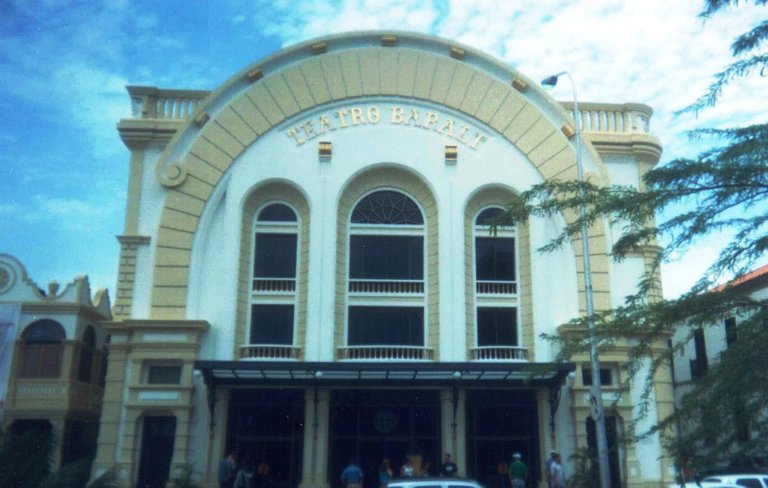
Our walk continued along the emblematic and colorful Calle Carabobo, one of the first founded in Maracaibo (18th century), located in El Saladillo neighborhood, which has become a tourist center with handicraft shops, bars, restaurants and a musical scene, a reflection of the joy that characterizes the natives of Zulia.
Nuestro paseo continuó por la emblemática y colorida Calle Carabobo, una de las primeras fundadas en Maracaibo (siglo XVIII), ubicada en el barrio El Saladillo, que se ha convertido en un centro turístico con tiendas de artesanía, bares, restaurantes y movida musical, reflejo de la alegría que caracteriza a los nativos del Zulia.
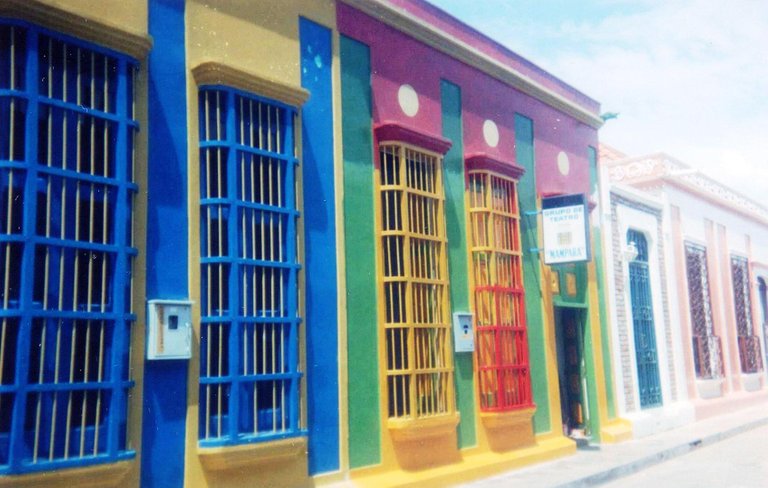
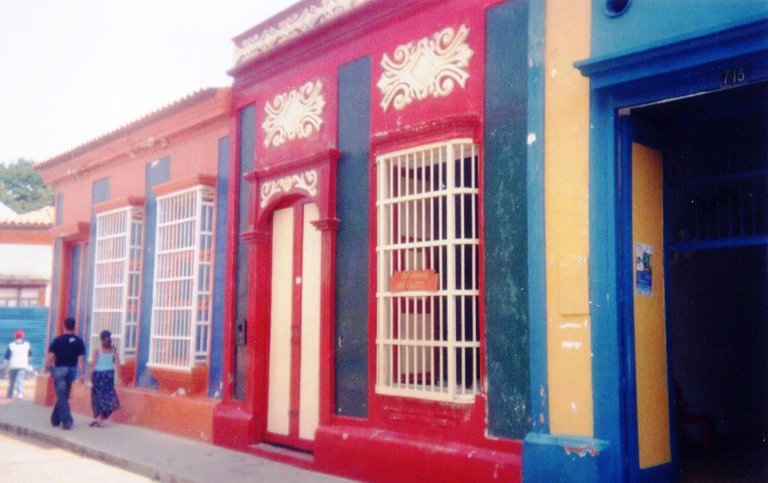
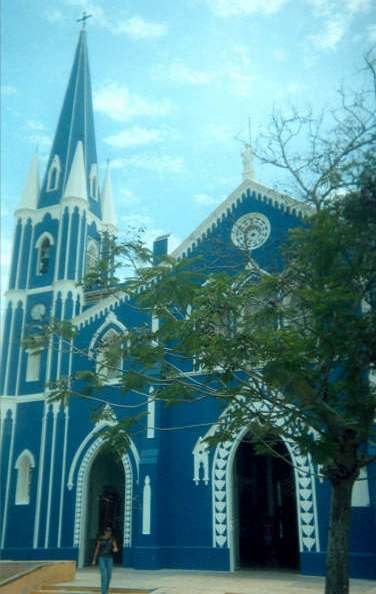
Finally, we couldn't leave Zulia without visiting the Basilica of Our Lady of the Rosary of Chiquinquirá, fervently venerated in this state and popularly called "La Chinita". In its surroundings there is a huge promenade with several religious figures.
Por último, no podíamos irnos del Zulia sin visitar la Basílica de Nuestra Señora del Rosario de Chiquinquirá, venerada fervorosamente en este estado y llamada popularmente "La Chinita". En sus alrededores hay un enorme paseo con varias figuras religiosas.
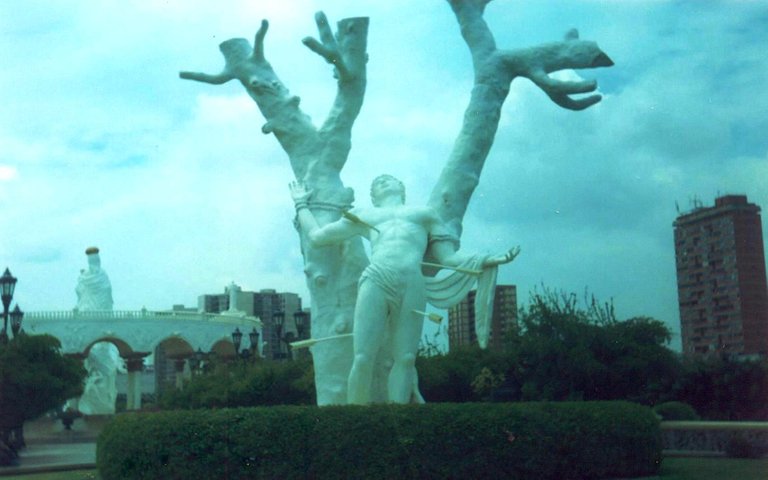
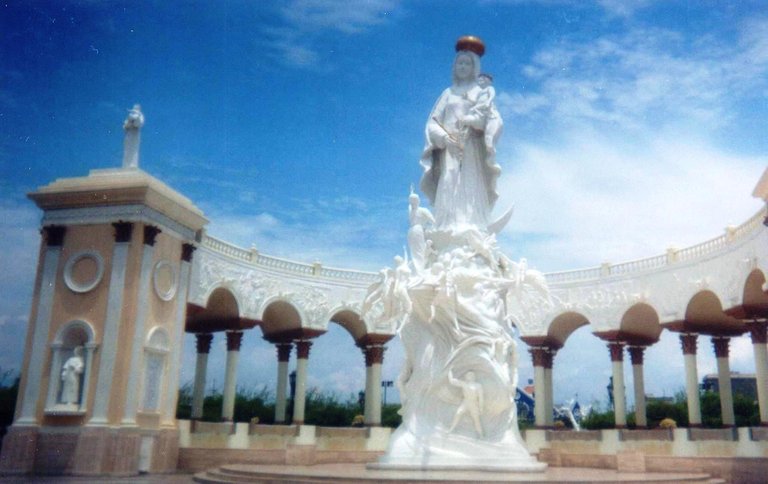
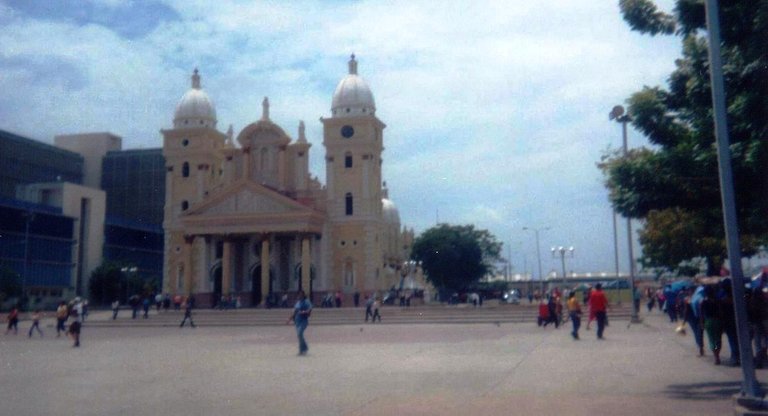
So far my journey, there are many more interesting places to visit in this state, which is also a fundamental pillar for the country in terms of oil production, I hope I can visit it again soon.
Hasta aquí mi recorrido, hay muchos más lugares interesantes que conocer en este estado que es además pilar fundamental para el país en cuanto a producción petrolera, ojalá pueda volver a visitarlo pronto.
All photos were taken by me / Todas las fotos fueron tomadas por mí
Congratulations, your post has been added to Pinmapple! 🎉🥳🍍
Did you know you have your own profile map?
And every post has their own map too!
Want to have your post on the map too?
Hiya, @LivingUKTaiwan here, just swinging by to let you know that this post made it into our Honorable Mentions in Daily Travel Digest #1056.
Your post has been manually curated by the @pinmapple team. If you like what we're doing, please drop by to check out all the rest of today's great posts and consider supporting other authors like yourself and us so we can keep the project going!
Become part of our travel community:
Thank you very much! Always happy to be mentioned in Travel Digest :)
It gave you time to visit several tourist sites. A very good summary of the culture and history, as well as of the aborigines. Thanks for sharing!
By the way, I am @ceparl and I've chosen this post for 100% curation in Hive Cross Culture's curation project.
• You will receive a percentage of the rewards from our curation post.
• And this post would be featured in our next weekly digest article.
Hive Cross culture is a community for conversation about culture. This can be national, local, community, or personal culture, subculture or your ideas about culture, language posts etc. We also invite and support bilingual posts, and are searching for ways to support and grow the local communities on Hive. Come join us in our discord chat if you are interested!
Thank you very much @crossculture and @ceparl! :)